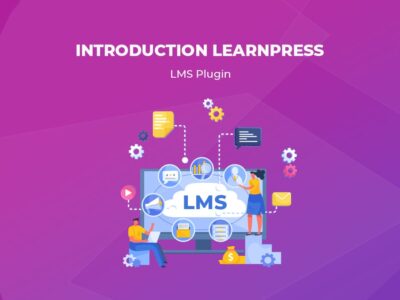Module 1: Introduction to Power BI
- 1.1 Overview of Power BI
- What is Power BI?
- Power BI Components: Power BI Desktop, Power BI Service, Power BI Mobile
- Benefits and Use Cases of Power BI
- 1.2 Installing Power BI Desktop
- System Requirements
- Downloading and Installing Power BI Desktop
- Overview of Power BI Desktop Interface
- 1.3 Power BI Service Overview
- What is Power BI Service?
- Navigating Power BI Service
- Connecting Power BI Desktop with Power BI Service
Module 2: Data Loading and Transformation
- 2.1 Importing Data
- Connecting to Data Sources: Excel, CSV, SQL Server, Web, and other sources
- Overview of Data Load Options (Direct Query vs. Import)
- Importing data with Power Query
- 2.2 Data Transformation with Power Query
- Cleaning and shaping data with Power Query Editor
- Handling missing data, duplicates, and errors
- Filtering and sorting data
- Merging and appending queries
- Creating custom columns using M language
- 2.3 Data Modeling Basics
- Introduction to Data Models: Relationships, Tables, and Keys
- Understanding Cardinality and Relationship Types
- Managing Relationships in Power BI
- Building and Managing Data Models
Module 3: Visualizations and Reporting
- 3.1 Introduction to Visualizations
- Types of Visuals in Power BI: Charts, Tables, Cards, Maps, etc.
- Creating and Formatting Visuals
- Understanding Visual Properties and Settings
- Choosing the Right Visual for Your Data
- 3.2 Creating Basic Reports
- Building Your First Report: Combining multiple visuals
- Customizing report layout and themes
- Working with Slicers and Filters
- 3.3 Advanced Visualizations
- Using Conditional Formatting
- Creating Custom Visuals
- Drillthrough, Tooltip, and Drilldown features
- Using Power BI Marketplace for additional visuals
- 3.4 Interactive Reports and Dashboards
- Creating Interactive Reports
- Designing Dashboards in Power BI Service
- Embedding Visuals and Reports
Module 4: DAX (Data Analysis Expressions)
- 4.1 Introduction to DAX
- What is DAX?
- Basic DAX Syntax and Functions
- Measures vs. Calculated Columns
- 4.2 Common DAX Functions
- SUM, AVERAGE, COUNT, COUNTROWS, MIN, MAX, etc.
- Logical Functions: IF, SWITCH, AND, OR
- Date and Time Functions: YEAR, MONTH, DATEADD, DATEDIFF
- Aggregation Functions: CALCULATE, FILTER, ALL, ALLEXCEPT
- 4.3 Advanced DAX Techniques
- Time Intelligence: YTD, QTD, MTD, etc.
- Creating Dynamic Measures and Calculations
- Variables in DAX
- Optimizing DAX Queries for Performance
Module 5: Power BI Service and Sharing Reports
- 5.1 Power BI Service Basics
- Navigating Power BI Service
- Creating and publishing reports to Power BI Service
- Creating and organizing workspaces
- 5.2 Data Refresh and Scheduling
- Setting up data refresh in Power BI Service
- Managing data gateways for on-premises data sources
- Scheduling refresh frequency
- 5.3 Sharing and Collaboration
- Sharing reports and dashboards with others
- Working with Apps in Power BI Service
- Creating and managing Power BI content packs
- Power BI Collaboration features: Comments, Alerts, and Sharing
- 5.4 Power BI Mobile App
- Accessing Reports on Mobile
- Using the Power BI mobile app for viewing dashboards
- Interacting with reports on mobile devices
Module 6: Power BI Advanced Features
- 6.1 Power BI Embedded
- Introduction to Power BI Embedded
- Embedding Power BI reports in applications
- Authentication and Access Control
- 6.2 Power BI APIs and Automation
- Overview of Power BI REST API
- Automating Power BI with Power Automate
- Integrating Power BI with other tools (e.g., Azure, Excel, etc.)
- 6.3 Advanced Data Modeling
- Star Schema vs. Snowflake Schema in Power BI
- Using Aggregation Tables for Performance Optimization
- Managing Large Datasets
- 6.4 Power Query Advanced Features
- Writing Custom Functions in Power Query
- Advanced Merge and Join Techniques
- Using Parameters for Flexible Queries
Module 7: Power BI Security and Governance
- 7.1 Row-Level Security (RLS)
- Implementing Row-Level Security in Power BI
- Configuring Roles and Rules
- Testing and managing RLS in Power BI
- 7.2 Power BI Security Best Practices
- Securing Data in Power BI Reports and Dashboards
- Managing Permissions and Access Control
- Best practices for Power BI Governance
- 7.3 Auditing and Monitoring Power BI
- Power BI Audit Logs
- Power BI Activity Reports
- Monitoring Dataset and Report Usage
Module 8: Power BI and Power Query Advanced Integration
- 8.1 Power BI and Excel Integration
- Importing Excel files into Power BI
- Using Power Query in Excel and Power BI
- Power Pivot and Power BI
- 8.2 Integrating Power BI with Other Microsoft Tools
- Power BI and Azure Integration
- Power BI with PowerApps and Power Automate
- Power BI and Teams for Collaboration
Module 9: Final Project and Case Studies
- 9.1 Project Guidelines
- Overview of the final project: Building a complete Power BI report
- Best practices for report design
- 9.2 Case Study Analysis
- Real-world case studies using Power BI
- Solutions for different industries (Finance, Sales, Marketing, etc.)
- 9.3 Hands-on Project
- Complete a hands-on project where students will build and present a Power BI report/dashboards.
Module 10: Power BI Certification Preparation (Optional)
- 10.1 Power BI Certification Overview
- Introduction to Power BI Certification Exam
- Topics Covered in Certification Exam
- Tips and Resources for Certification Preparation
- 10.2 Practice Tests
- Sample Test Questions
- Solving Real-life Power BI Scenarios
Course Features
- Lectures 1
- Quizzes 0
- Duration 10 weeks
- Skill level All levels
- Language English
- Students 1
- Assessments Yes


